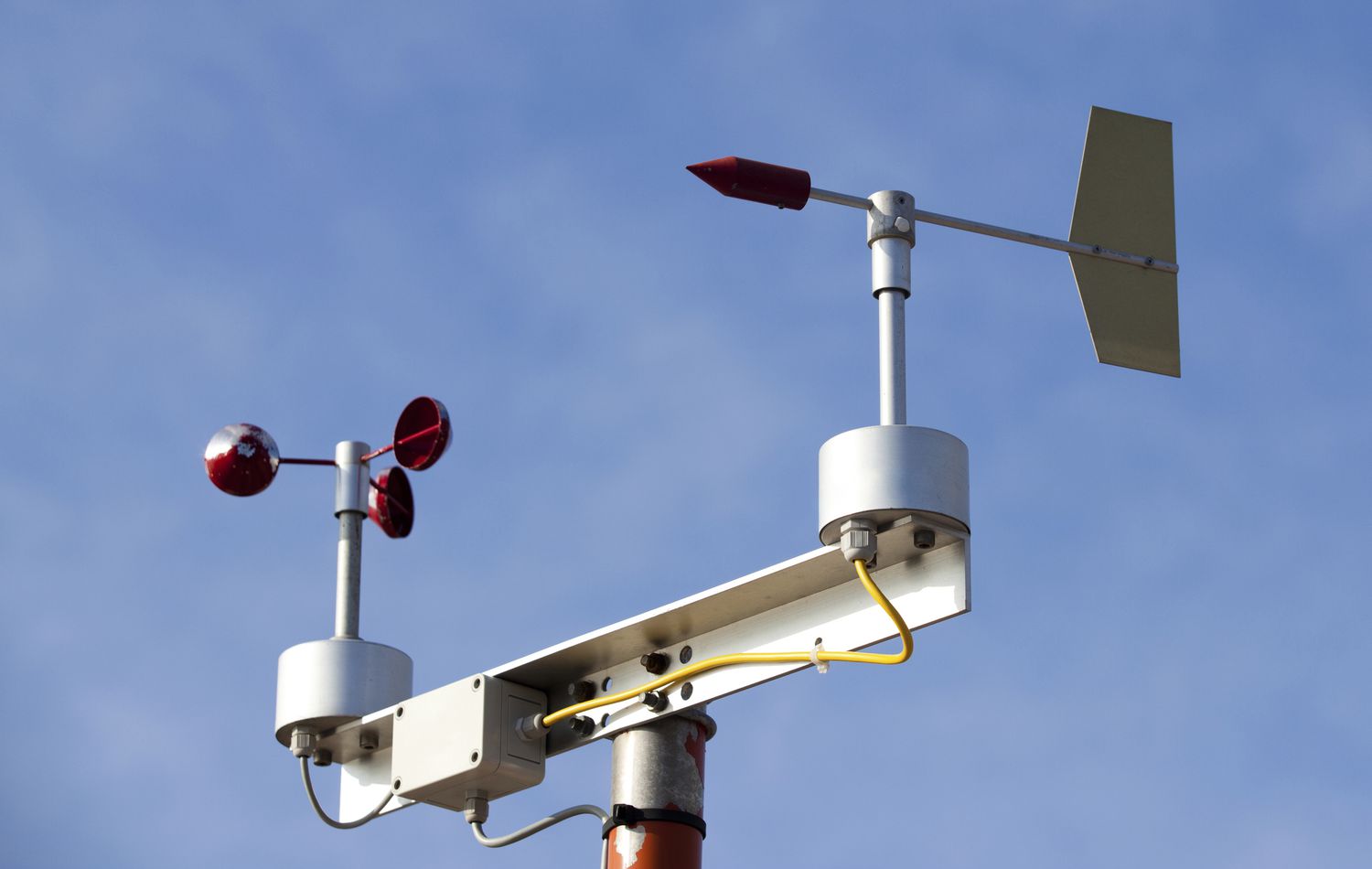
An anemometer is a crucial tool for measuring wind speed and direction, playing a vital role in various fields such as meteorology, aviation, and environmental monitoring. This device has a rich history, dating back to ancient civilizations' attempts to understand and harness the power of the wind. Over the years, anemometers have evolved from simple cup and vane designs to sophisticated electronic and ultrasonic models, enabling precise and real-time wind data collection.
Understanding the key facts about anemometers can provide valuable insights into their significance and impact on diverse industries. From their fundamental principles to their modern applications in weather forecasting and renewable energy, anemometers continue to shape our understanding of atmospheric dynamics and influence decision-making processes in numerous sectors. Delving into the fascinating details of anemometers unveils their profound contributions to scientific research, safety regulations, and technological advancements. Let's explore 15 captivating facts about anemometers that shed light on their enduring relevance and innovation in today's world.
Key Takeaways:
- Anemometers, from ancient times to modern technology, help us understand and use the power of the wind for weather forecasting, renewable energy, and even recreational activities like kite flying and sailing.
- Different types of anemometers, like cup and ultrasonic anemometers, measure wind speed and direction for various purposes, from predicting weather changes to optimizing wind energy systems.
Anemometers have been used since ancient times.
Anemometers, devices used to measure wind speed and direction, have a rich history dating back to ancient civilizations. The earliest known description of an anemometer was by Greek mathematician Leon Battista Alberti in the 15th century. The concept of harnessing the wind's power has fascinated innovators for centuries, leading to the development of various types of anemometers.
The word "anemometer" originates from Greek.
The term "anemometer" has its roots in the Greek words "anemos," meaning wind, and "metron," meaning measure. This etymology perfectly encapsulates the primary function of anemometers: to measure and quantify the force and direction of the wind.
There are different types of anemometers.
Anemometers come in various forms, including cup anemometers, vane anemometers, sonic anemometers, and hot-wire anemometers. Each type is designed to capture specific data about the wind, such as speed, direction, and turbulence.
The cup anemometer is a common design.
One of the most widely recognized types of anemometers is the cup anemometer, which features three or four cups mounted on horizontal arms. As the wind rotates the cups, the resulting spin is translated into wind speed measurements.
Anemometers are crucial for weather forecasting.
Meteorologists rely on anemometers to gather essential wind data for accurate weather predictions. By understanding wind patterns, forecasters can anticipate weather changes and provide early warnings for severe conditions.
Anemometers are utilized in various industries.
Beyond meteorology, anemometers play a pivotal role in industries such as aviation, marine navigation, renewable energy, and environmental monitoring. These devices provide vital wind-related information for safe operations and optimal resource utilization.
The first handheld anemometer was patented in 1846.
The invention of the handheld anemometer, credited to John Thomas Romney Robinson, revolutionized the portability and accessibility of wind measurement devices. This innovation opened new avenues for studying wind dynamics in diverse environments.
Ultrasonic anemometers offer high precision.
Ultrasonic anemometers employ sound waves to determine wind speed and direction, offering exceptional accuracy and reliability. These advanced instruments are widely used in research, aviation, and environmental studies.
Anemometers are integral to wind energy systems.
In the realm of renewable energy, anemometers are instrumental in site assessment and performance monitoring for wind turbines. By analyzing wind data collected by anemometers, engineers can optimize the placement and operation of wind farms.
Hot-wire anemometers are sensitive to air movement.
Hot-wire anemometers utilize a heated wire to measure airflow, making them highly sensitive to subtle changes in wind speed and direction. This precision is valuable in research settings and boundary layer studies.
Anemometers have evolved with technological advancements.
Modern anemometers incorporate cutting-edge technologies such as wireless connectivity, data logging, and remote monitoring capabilities. These features enhance the efficiency and convenience of wind data collection across diverse applications.
Anemometers are crucial for climate research.
In the context of climate studies, anemometers contribute to understanding wind patterns and their influence on temperature distribution, atmospheric circulation, and climate change. This data is pivotal for modeling and predicting long-term climate trends.
Anemometers are used in sports and recreational activities.
Anemometers are utilized in sports such as sailing, kiteboarding, and paragliding to assess wind conditions and ensure safety during outdoor pursuits. Additionally, recreational enthusiasts leverage anemometers for wind-dependent hobbies like flying kites and model aircraft.
Anemometers are integrated into smart weather stations.
With the rise of smart technology, anemometers are often integrated into comprehensive weather stations that provide real-time wind data alongside other meteorological parameters. These compact, user-friendly systems cater to diverse users, from hobbyists to professionals.
The future of anemometers is driven by innovation.
As the demand for accurate wind measurement persists across various sectors, ongoing innovation in sensor technology, data analysis, and integration capabilities continues to shape the future of anemometers. These advancements promise enhanced precision and accessibility for wind-related data.
Anemometers are indispensable tools for understanding and harnessing the power of the wind. With their historical significance, diverse applications, and pivotal role in numerous fields, anemometers remain integral to modern-day scientific exploration, industrial operations, and environmental stewardship.
Conclusion
In conclusion, anemometers are crucial instruments for measuring wind speed and direction, playing a pivotal role in various fields such as meteorology, aviation, and environmental monitoring. These devices have evolved significantly over time, from traditional cup and vane anemometers to modern ultrasonic and laser-based models. Understanding the principles behind anemometry is essential for accurate wind data collection and analysis, contributing to improved weather forecasting, efficient energy generation, and safe navigation. As technology continues to advance, anemometers will likely undergo further enhancements, empowering industries and researchers with more precise and reliable wind measurement capabilities.
FAQs
What are the main types of anemometers?Anemometers come in various types, including cup, vane, sonic, and laser anemometers. Each type utilizes distinct principles to measure wind speed and direction accurately.
How do anemometers benefit different industries?Anemometers play a crucial role in meteorology, aviation, renewable energy, and environmental monitoring by providing essential wind data for weather prediction, flight safety, wind energy production, and air quality assessment.
Was this page helpful?
Our commitment to delivering trustworthy and engaging content is at the heart of what we do. Each fact on our site is contributed by real users like you, bringing a wealth of diverse insights and information. To ensure the highest standards of accuracy and reliability, our dedicated editors meticulously review each submission. This process guarantees that the facts we share are not only fascinating but also credible. Trust in our commitment to quality and authenticity as you explore and learn with us.


